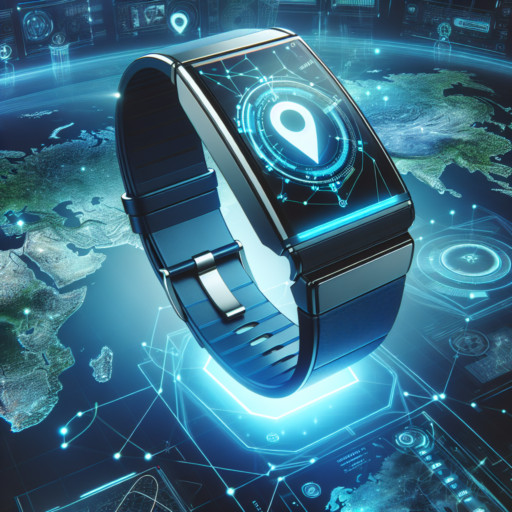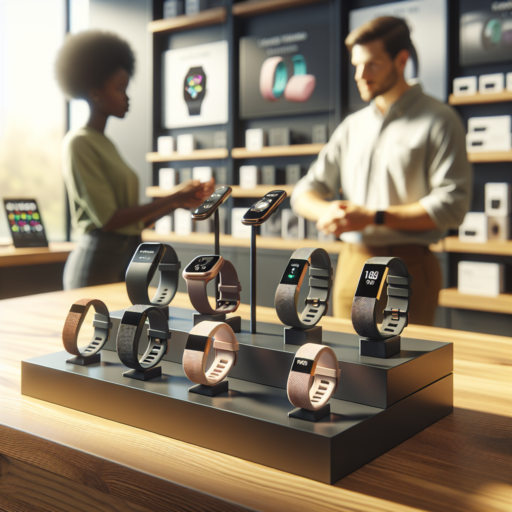What is a GPS Band and How Does It Work?
A GPS Band, aptly named for its integral Global Positioning System technology, is a sophisticated wearable device designed to track the geographic location of the wearer. These bands have become increasingly popular among athletes, outdoor enthusiasts, and for personal safety, providing not only location tracking but also a range of other functionalities including fitness monitoring and navigation assistance. But how exactly does this compact device keep tabs on your whereabouts?
The core functionality of a GPS Band hinges on the Global Navigation Satellite System (GNSS) network. This network encompasses a group of satellites orbiting the Earth, sending precise signals, which the GPS band captures to compute the wearer’s exact location. The process involves the satellite transmitting a signal that includes its location and the time the message was sent. The GPS band receives this signal and calculates the distance from the satellite by measuring how long it took for the message to arrive. By acquiring signals from multiple satellites, the band triangulates the wearer’s precise position on the Earth’s surface.
Modern advancements have enhanced the capabilities of GPS Bands, allowing them to provide more than just location services. Many models come equipped with features such as heart rate monitoring, step counting, and even syncing with a mobile device to display notifications or control music playback. Despite these enhancements, the essence of a GPS Band’s functionality remains its ability to accurately determine and track location through sophisticated satellite technology, making it an indispensable tool for many.
Top Benefits of Using a GPS Band for Fitness and Safety
Integrating a GPS band into your daily fitness routine offers a multitude of advantages, enhancing not only your physical activities but also ensuring your safety. These wearable devices have revolutionized how we approach exercise and outdoor activities.
Accurate Tracking of Distance and Pace
One of the primary benefits of using a GPS band is its ability to accurately track the distance covered and the pace maintained during exercise. This precision enables individuals to assess their performance improvements over time, setting specific, measurable goals for distance or speed enhancements. Whether you’re running, cycling, or hiking, a GPS band provides you with real-time data to optimize your workout efficiency.
Enhanced Safety Features
For those who enjoy solitary workouts or adventurous treks, the safety features of a GPS band are invaluable. Advanced models come equipped with emergency alert systems, enabling users to send their precise location to emergency contacts with just a push of a button. This functionality is critical for immediate assistance in case of accidents, injuries, or if you find yourself in a potentially dangerous situation.
Boosts Motivation and Accountability
Furthermore, a GPS band acts as a motivational tool, encouraging users to push their limits by providing tangible evidence of their achievements. Sharing these accomplishments on social media or with a community of fellow enthusiasts adds an element of accountability, propelling individuals towards maintaining a consistent exercise regimen. The ability to visualize progress through detailed maps and stats enhances the gratification received from each workout, making fitness goals more attainable.
5 Best GPS Bands of 2023: Features and Pricing Comparison
Overview of the Top GPS Bands
As technology evolves, GPS bands have become indispensable for athletes, adventurers, and anyone looking to track their movements accurately. The market is flooded with options, making it hard to choose. In 2023, several bands have stood out for their innovative features, durability, and affordability. These devices not only offer precise location tracking but also come with a slew of health and fitness tracking capabilities, making them a versatile accessory for a wide range of users.
Key Features to Consider
When comparing the best GPS bands, several key features become crucial in the decision-making process. Battery life, water resistance, connectivity options, and app integration are at the forefront of considerations. Moreover, the accuracy of the GPS technology, the ability to sync with other devices, and additional functionalities like heart rate monitoring, sleep tracking, and onboard music storage can significantly enhance the user experience.
Pricing: What to Expect
While features and performance are paramount, pricing plays a crucial role in selecting the right GPS band. In 2023, the price range varies significantly, with premium bands offering extensive features at a higher cost, while more affordable options provide basic GPS functionalities and fitness tracking. The balance between cost and features is essential, as investing in a device that meets your specific needs without breaking the bank is always the goal.
GPS Band vs. Smartwatch: Which Should You Choose?
Deciding between a GPS band and a smartwatch is a common dilemma faced by many tech enthusiasts and fitness aficionados alike. Both devices offer unique features that cater to different preferences and needs. Understanding the core functionalities and advantages of each can help guide your decision-making process.
GPS Band: Designed for the Avid Runner
GPS bands are specifically engineered for tracking your running metrics with precision. They focus on providing detailed insights into your running pace, distance covered, and routes taken. If your primary concern is tracking your physical activity, especially running or hiking, a GPS band is a no-brainer. Its lightweight design and long battery life make it an ideal companion for endurance athletes and outdoor adventurers who prioritize functionality over style.
Smartwatch: A Versatile Tech Companion
On the other hand, smartwatches are all about versatility. Not only do they offer fitness tracking capabilities, including GPS functions, but they also bring a host of other features to your wrist. You can receive notifications, send messages, make calls, and even use apps, making it a multi-functional device. Smartwatches are for those who seek a device that blends fitness tracking with the convenience of smartphone features, all while sporting a stylish accessory.
How to Choose the Right GPS Band for Your Needs
Choosing the right GPS band is crucial for ensuring you have a reliable and efficient tool to track your activities, navigate your adventures, or monitor your fitness progress. With a myriad of options available in the market, finding the perfect match for your needs can seem daunting. However, focusing on a few key aspects can simplify this process significantly.
Identifying your primary use is the first step towards narrowing down your choices. GPS bands cater to a wide range of activities – from simple daily step tracking to advanced navigation for outdoor expeditions. Whether you’re a casual walker, a marathon runner, or an avid hiker, there’s a GPS band designed to meet your specific activity requirements. Recognizing your main activity will guide you in selecting a band that is equipped with the most relevant features for you.
Key Features to Consider
- Battery Life: For long-duration activities, a GPS band with an extended battery life is essential.
- Water Resistance: If your activities involve water or you often find yourself in wet conditions, look for bands that are water-resistant.
- GPS Accuracy: The precision of the GPS is critical for navigation and tracking. Bands with multi-GNSS support offer improved accuracy by connecting to multiple satellite systems.
- Compatibility: Ensure the GPS band is compatible with your smartphone or any other device you plan to use it with. This is crucial for syncing your data and using connected features.
Through understanding your needs and weighing them against the features and capabilities of different GPS bands, you can find the right tool that enhances your activities, offers the most value, and ultimately, meets your specific demands. Taking the time to research and compare will lead you to a GPS band that not only fits your lifestyle but also supports your goals.
Setting Up Your New GPS Band: Step-by-Step Guide
Setting up your new GPS band is a simple process that will get you ready to track your activities and navigate your adventures in no time. This easy-to-follow guide will walk you through the key steps to ensure your GPS band is up and running effectively.
Unboxing and Initial Setup
First, carefully unbox your new GPS band, making sure you have all the necessary components, including the charging cable and any paperwork. Charge your device to full capacity before beginning the setup process. This initial charge ensures that you have enough battery life to complete the setup and start using your device right away.
Downloading the Companion App
Most GPS bands require a companion app for full functionality. Visit the App Store or Google Play, depending on your smartphone’s operating system, and search for your GPS band’s companion app. Download and install the app, then open it and follow the on-screen instructions to connect your GPS band. This connection is crucial for syncing data between your device and the app, enabling you to access detailed analytics and settings.
Personalizing Your Experience
Once your GPS band is connected to the companion app, take some time to personalize your settings. Enter any requested personal information, such as height, weight, and age, to ensure your activity data is accurately calculated. Explore the app’s settings to customize your preferences, from display options to alerts and notifications. Remember, taking a few moments to tailor the app’s settings to your needs can significantly enhance your experience using the GPS band.
Maximizing Battery Life: Tips for Your GPS Band
Maintaining the battery life of your GPS band not only ensures it’s always ready when you need it but also preserves the overall longevity of the device. With a few straightforward tips, you can significantly extend the time between charges, ensuring your device stays powered through your adventures.
Adjust the Tracking Interval
One effective strategy to maximize your GPS band’s battery life is by adjusting the tracking interval. Many devices are set to track movement continuously by default, which can drain the battery quickly. By setting your band to update its location less frequently, you can conserve significant amounts of power. Experiment with longer intervals to find a balance between battery life and tracking accuracy.
Limit the Use of Backlight and Vibrations
The backlight and vibration alerts on your GPS band are significant battery drainers. Use them sparingly to extend battery life. Instead of having the backlight always on, adjust the settings so it activates only when necessary. Similarly, reduce the vibration intensity or entirely switch off this feature unless you specifically need it for alerts or alarms. These small adjustments can make a notable difference in how long your battery lasts.
Implementing these tips not only enhances the battery life of your GPS band but also contributes to a better overall user experience. By optimizing the device’s settings to fit your usage patterns, you conserve energy and ensure that your band is ready for use whenever you embark on your next journey.
Troubleshooting Common Issues with GPS Bands
Experiencing issues with your GPS band can be frustrating, especially when you rely on it for your fitness tracking or navigation needs. Fortunately, many common problems can be addressed with some basic troubleshooting steps.
Ensuring Proper Connectivity
One of the most frequent issues with GPS bands is a failure to connect or maintain a stable connection. First, check that your GPS band is adequately charged and your smartphone’s Bluetooth is turned on. Then, try resetting the connection by turning your device’s Bluetooth off and on again. If these steps don’t work, trying to reset your GPS band can often solve connectivity problems.
Updating Software and Firmware
In many cases, issues with GPS bands stem from outdated software or firmware. Manufacturers frequently release updates that can fix bugs or improve performance. To resolve these issues, ensure that both your GPS band and the companion app on your smartphone are updated to the latest versions. This can be done through the app associated with your device or, in some cases, directly through the device’s settings.
Addressing Accuracy Concerns
If your GPS band is experiencing accuracy problems, such as not tracking your location correctly, there are several steps you can take. Firstly, verify that your device’s GPS is set to high accuracy mode in its settings. Furthermore, ensure that you’re in an area with minimal obstructions such as tall buildings or dense foliage, as these can interfere with signal quality. Sometimes, calibrating your device’s compass or GPS according to the manufacturer’s instructions can significantly improve accuracy.
The Future of GPS Bands: Trends and Innovations to Watch
The evolution of GPS bands is reshaping how we engage with the world around us, offering advancements that promise not only to enhance personal safety but also to revolutionize various industries, from fitness to healthcare. As we move forward, the fusion of cutting-edge technology with GPS bands is setting the stage for a new era of convenience, efficiency, and connectivity. Among the most anticipated trends and innovations in this space, several are particularly poised to redefine our expectations.
Integration of Advanced Health Monitoring Capabilities
The future of GPS bands is not just about location tracking; it’s increasingly focused on comprehensive health and wellness monitoring. Innovators are integrating sensors capable of tracking vital signs such as heart rate, blood pressure, and even blood oxygen levels, transforming GPS bands into holistic health monitoring devices. This trend is not only beneficial for individuals seeking to maintain a healthy lifestyle but also holds significant promise for the elderly and people with chronic conditions, enabling remote monitoring and potentially life-saving alerts.
Enhanced Battery Life and Energy Efficiency
One of the critical challenges facing current GPS band technology is the limitation imposed by battery life. However, the industry is witnessing significant strides towards the development of more energy-efficient GPS bands that offer longer battery life. Innovations such as low-power GPS chips and energy-harvesting techniques, which convert body heat or kinetic energy into electrical energy, are at the forefront of this revolution. These advancements mean that users can look forward to GPS bands that require less frequent charging, making them more practical for everyday use.
How to Integrate Your GPS Band with Fitness Apps for Ultimate Tracking
Integrating your GPS band with fitness apps can transform your fitness tracking experience, providing a holistic view of your activity levels, patterns, and areas for improvement. This synergy allows for a more comprehensive health and fitness management by combining the detailed geographical data from your GPS band with the analytical power of fitness apps.
Step-by-Step Guide to Connecting Your Devices
Start by ensuring your GPS band is compatible with your chosen fitness app. Most bands will have a list of supported apps provided by the manufacturer. Once you’ve confirmed compatibility, download and install the fitness app on your smartphone or tablet. Open the app and navigate to its Settings or Devices menu, where you’ll typically find an option to Add a device or Connect a device. Follow the on-screen instructions to pair your GPS band with the app. This process may involve entering a code displayed on your GPS band or simply confirming the connection on both devices.
Maximizing the Benefits of Integration
After successfully pairing your devices, take some time to explore the fitness app’s features and settings. Many apps allow for customization of what data you wish to track and how it’s displayed. Personalize your dashboard to focus on metrics that matter most to you, such as distance covered, steps taken, or calories burned. Additionally, by exploring advanced features like setting up training plans or joining challenges, you can further enhance your fitness journey. Engaging with the app’s community or sharing your progress on social media can also be great motivators.
Remember, for the best experience, regularly update both your GPS band and fitness app to the latest versions. This ensures you have access to the newest features and maintain a seamless connection between devices. By integrating your GPS band with fitness apps, you unlock a powerful toolset for tracking and improving your health and fitness goals.










